Goseong DMZ Museum (고성 DMZ 박물관)
0m 43200 2022-12-28
369, Tongiljeonmangdae-ro, Goseong-gun, Gangwon-do
+82-33-681-0625
The DMZ Museum was founded in honor of people's hope for unification of South Korea and North Korea. It is located at the northernmost area along the east coast near the civilization control line.The museum features exhibition halls arranged in a number of different themes that highlight the historical significance and the meaning of the DMZ, from the aftermath of war to its pristine ecosystem.
Goseong Unification Observatory (고성 통일전망타워)
7.5 Km 44736 2024-02-28
481 Geumgangsan-ro, Hyeonnae-myeon, Goseong-gun, Gangwon-do
+82-33-682-0088
The Goseong Unification Observatory stands as the northernmost observatory in South Korea. It provides panoramic views of the DMZ, the East Sea, and North Korea's Geumgangsan Mountain. Established as a symbol of hope for the reunification of the Korean Peninsula, it features an exhibition hall dedicated to educating visitors about the Korean War (1950-1953). Due to its location near the DMZ, visitors must bring an ID, such as a passport or alien registration card, for entry.
DMZ Peace Trail (Goseong A/B Course) (DMZ 평화의 길(고성 A/B코스))
7.5 Km 0 2024-03-18
481 Geumgangsan-ro, Hyeonnae-myeon, Goseong-gun, Gangwon-do
The DMZ Peace Trail is a trekking path created with the hope of fostering peace in the Korean DMZ (Demilitarized Zone). This trail offers views of the renowned Geumgangsan Mountain and the Haegeumgang Islets. To access the trail, visitors must first register their visit at the Goseong Visitor Registration Center, confirm their identity, and then acquire a visitor pass at the Jejin Checkpoint. After these steps, visitors can proceed to the Unification Observatory, which is the starting point of the trail.
[Course A] Unification Observatory → Geumgang Access Gate → Geumgangsan Observatory → Unification Observatory (2.7km on foot + 5.2km by car)
[Course B] Unification Observatory → Anho Checkpoint → Geumgangsan Observatory → Unification Observatory (7.2km by car)
The Korean War Exhibition Hall (6.25 전쟁체험전시관)
7.5 Km 24888 2021-04-17
481, Geumgangsan-ro, Goseong-gun, Gangwon-do
+82-33-682-0088
The Korean War Experience Hall, located next to the Unification Observatory, offers lessons learned through the tragedy of civil war and provides hopes for a peaceful reunification and harmony in the homeland. Visitors can get a deeper understanding of the Korean War and the hardships it led to through videos, materials, and relics on display in this hall.
Hwajinpo Beach [National Geopark] (화진포 (강원평화지역 국가지질공원))
11.9 Km 21228 2021-06-23
Hyeonnae-myeon, Goseong-gun, Gangwon-do
+82-33-249-3881
Hwajinpo Lake is the largest lagoon in Korea, created by a section of the ocean being closed off when two opposing sand spits merged. This unique formation and the ecosystem that came to live on the sand bar are highly valued. The water in the lagoon was a mix of fresh and salt water, creating a special environment for aquatic animals of both types to live together. The lake is in the shape of a figure eight, with the southern lake being larger than the northern lake, although the northern lake is still connected with the ocean through a small stream.
Villa of Lee Ki-poong (이기붕별장)
12.4 Km 24814 2022-09-08
300-1, Hwajinpo-gil, Goseong-gun, Gangwon-do
+82-33-680-3677
The villa of Lee Ki-poong is located between the villas of Rhee Syngman and Kim Ilsung on the shores of Hwajinpo Lake. The villa was originally built by foreign missionaries in the 1920s. It was used as vacation villa by the Northern communist party's executives before the Korean War broke out, and was turned into a private residence by Lee, the Vice-president to President Rhee, and his wife Maria Park after the cease-fire agreement.
Villa of Rhee Syngman (이승만별장(고성))
12.6 Km 34257 2019-07-20
33, Iseungmanbyeoljang-gil, Goseong-gun, Gangwon-do
+82-33-682-0500
During the 1950's, three leaders, namely Kim Ilsung, Rhee Syngman and Lee Ki-poong had summer houses built around the lake of Hwajinpo. The villa of Rhee Syngman, Korea's first president, was built in 1954 but fell into a state of disuse by 1961. It was not repaired until July of 1997 by the army, and was fully restored in 1999, opening as an exhibition hall.
Hwajinpo History & Security Museum (화진포역사안보전시관)
12.6 Km 7555 2021-07-20
33, Iseungmanbyeoljang-gil, Goseong-gun, Gangwon-do
+82-33-680-3677
Next to Hwajinpo Lake and a dense forest of pine trees lays Hwajinpo History and Security Museum. Its premier location near amazing ecological sites makes the museum a popular destination to pay a visit. The museum holds goods used during warfare and other historical remains of former presidents. Various government officials had private villas in the area including former president Syngman Rhee.
Castle at Hwajinpo (화진포의 성(김일성별장))
12.7 Km 48104 2021-02-04
280, Hwajinpo-gil, Goseong-gun, Gangwon-do
+82-33-680-3677
The Castle of Hwajinpo was the summer retreat for Kim Ilsung, former leader of North Korea, and his family from 1948 to 1950. Photos of the family on vacation there show Kim Jungil as a young boy of six years. The building was constructed entirely of stone in 1938 by a German architect for the Sherwood Hall missionary family, and features a basement level and two above-ground floors. The house is now open to the public, with an exhibition of how the house was used by the Kim family, faithfully recreated from photographic research.
Hwajinpo Lake (화진포(화진포호))
13.2 Km 15015 2021-08-10
Geojin-eup, Goseong-gun, Gangwon-do
+82-33-680-3677
Hwajinpo Lake is the largest lagoon in Korea with its sand made from seashells and rocks that were broken down over thousands of years. With soft sand and shallow waters, it is a popular beach location. In winter, various migratory birds and swans can be seen, as the birds enjoy clean water and food from the field of reeds. Because of its excellent scenery, Kim Il-seong of North Korea and the former South Korean President Rhee Syngman and Vice-president Lee Ki-poong had summer houses here. It also has Hwajinpo Museum of History with more than 40,000 artifacts from 1,500 species.

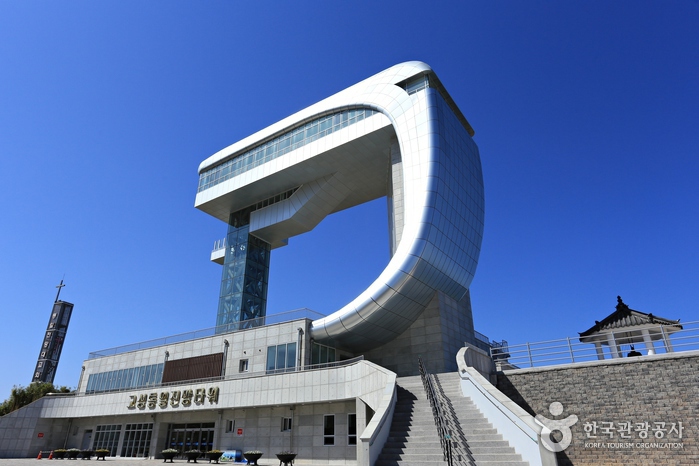
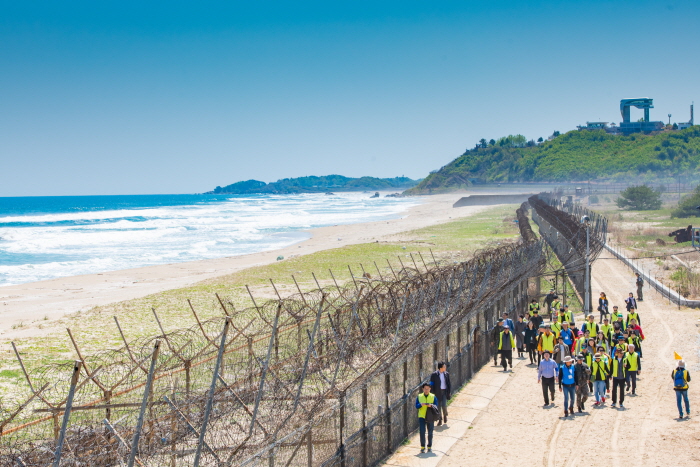
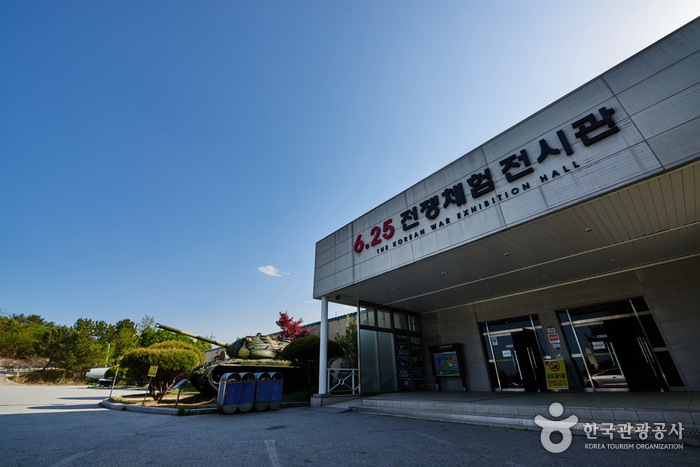
![Hwajinpo Beach [National Geopark] (화진포 (강원평화지역 국가지질공원))](http://tong.visitkorea.or.kr/cms/resource/87/217287_image2_1.jpg)
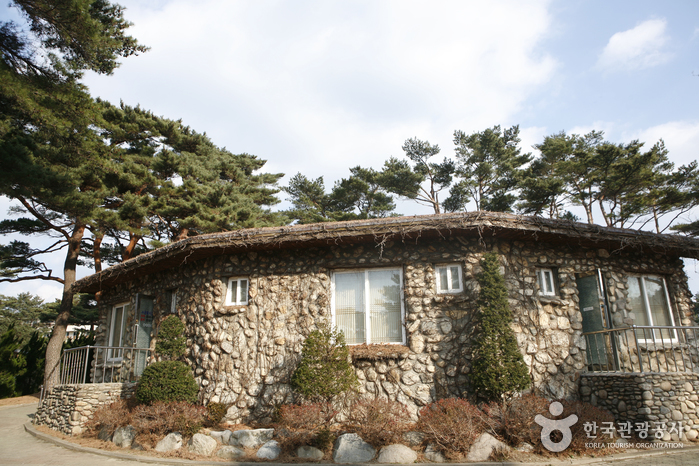
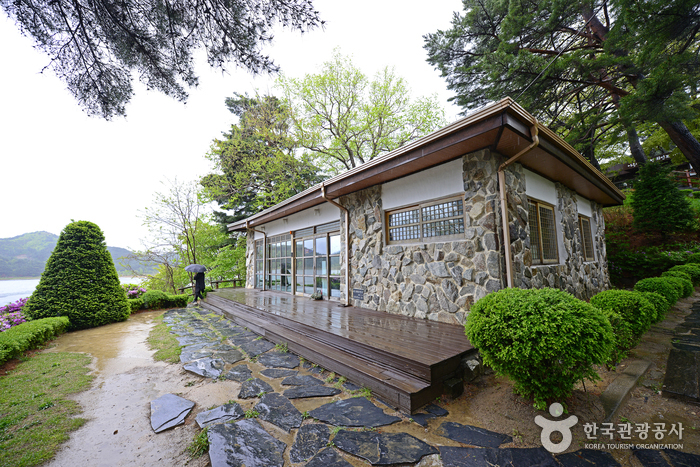
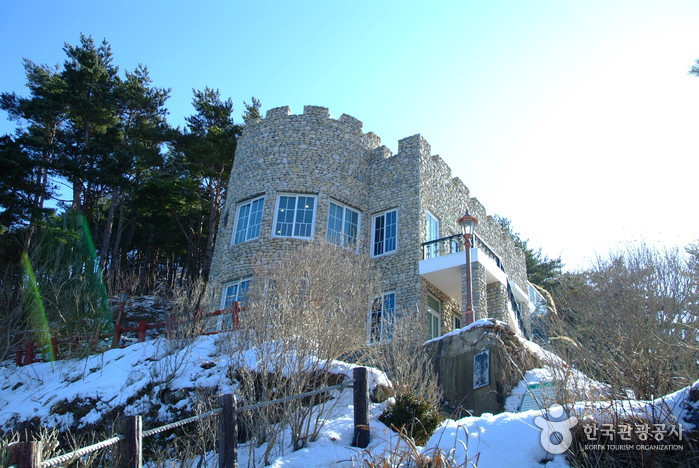
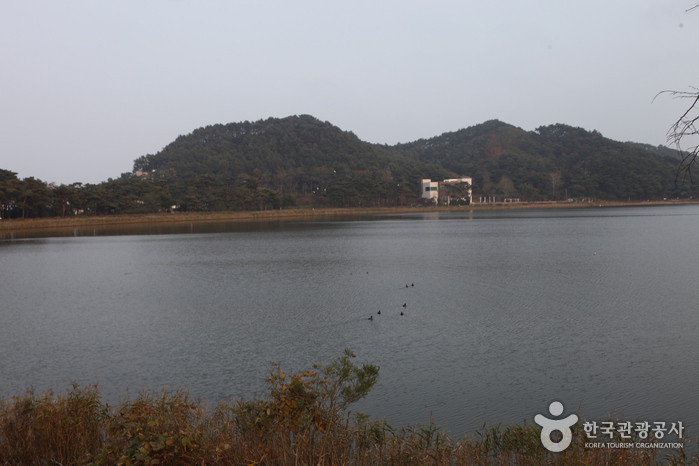
 English
English
 한국어
한국어 日本語
日本語 中文(简体)
中文(简体) Deutsch
Deutsch Français
Français Español
Español Русский
Русский